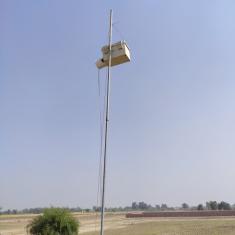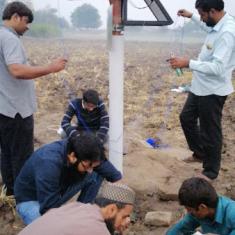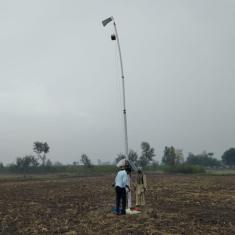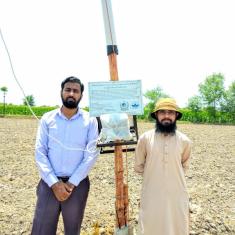Air Quality Monitoring in Agricultural Fields
The importance of agriculture in Pakistan can never be emphasized enough. It is responsible for food availability in both the rural and urban areas which in consequence is accountable for the overall health index of the country as well. The objectives of this project included; the evaluation of seasonal and diurnal trends in Ozone concentrations observed at a Punjab EPD air quality monitoring site located in Lahore. To develop a relationship between urban and rural sites using observations recorded at the monitoring site and the results of the modelling simulations and lastly to compute crop yield reductions at farms. With the challenge of monitoring air quality in rural areas identified and the challenges that come with real time or in-situ measurements, a low-cost air quality instrument suite was developed that would be able to capture the atmospheric dynamics as well as air quality condition prevalent over an agricultural field. Its aim was to capture the atmospheric conditions and to accurately characterize the spatial and temporal distribution of ozone along with some meteorological variables. The sites chosen for this project were selected based on ease of accessibility and the aim to capture the atmospheric conditions prevalent at both farms during the entire winter wheat crop cycle of sowing, irrigation, growth, fertilizing, and harvesting. The developed instruments were deployed at two rural sites:
- Bedian Farm (18th October 2019 – 6th May 2020)
- Okara Farm (14th November 2019 – 1st May 2020)
The outcomes of this project included:
The development and testing of sensors for reliable measurements of temperature, humidity, wind speed, soil moisture, soil temperature and O3 concentrations. To quantify the potential impacts of Ozone concentrations on crop yield and comparison against published literature. The development of automated data processing and analysis tools for use by Punjab Environmental Protection Department and other government agencies. An improved understanding of atmospheric dynamics and chemistry prevalent over Punjab and the chemical transport model validation for improved characterization of bias and errors associated with their use of yield estimate.






